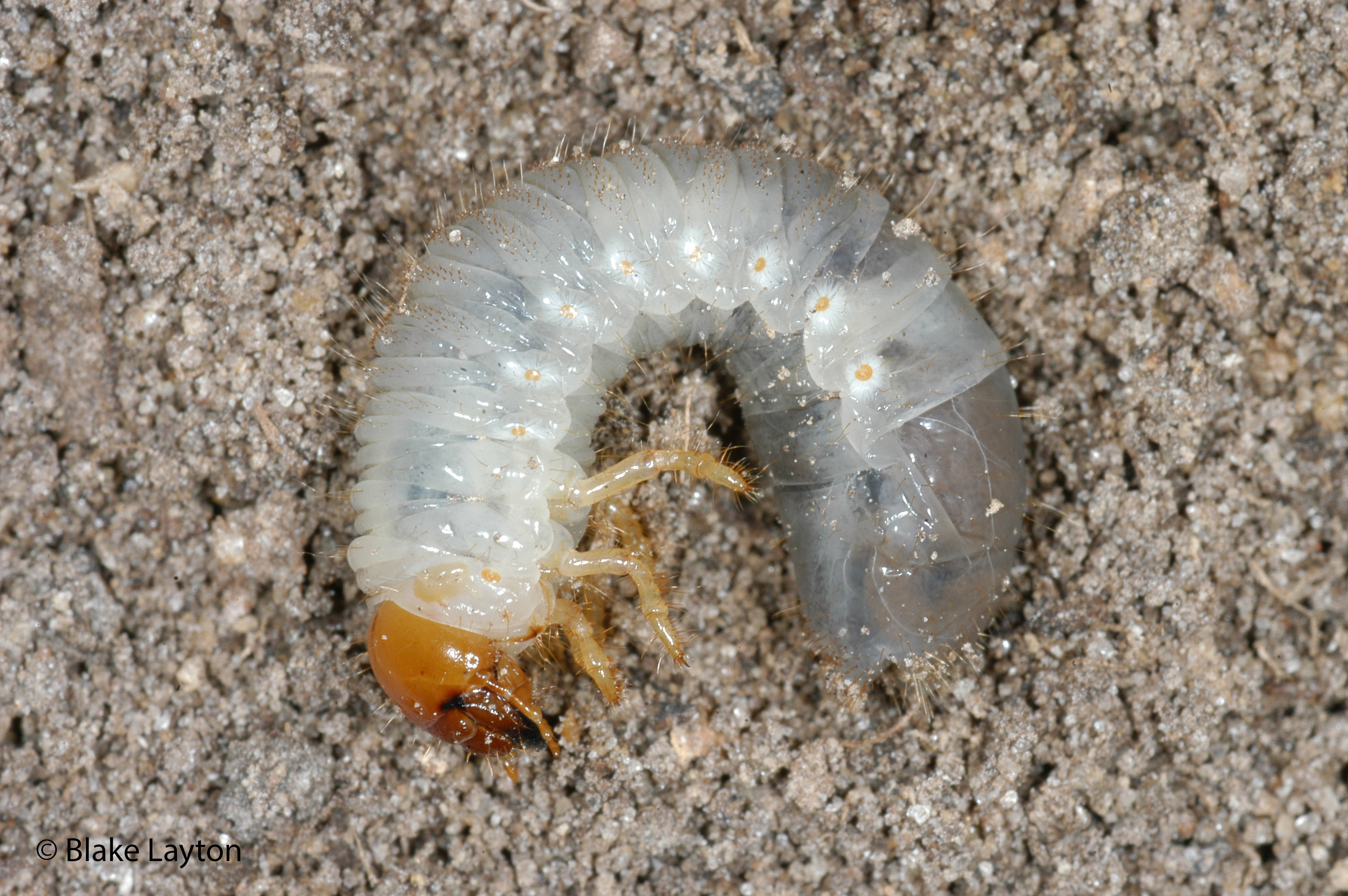White Grubs Vol. 5, No. 9

White Grubs
Various Species
Order: Coleoptera
Family: Scarabaeidae
Got skunks and armadillos digging holes in the yard, or have areas of grass that fail to green-up properly in the spring? Could be white grubs. White grubs are the larvae of June beetles, May Beetles, masked chafers, and several other species of scarab beetles. These insects damage turfgrass by pruning roots as they feed on organic matter in the root zone, causing drought stress and poor nutrient uptake. Heavy grub infestations are more likely to occur on lawns with high levels of organic matter—lawns that have received heavy applications of organic fertilizer, or lawns with heavy accumulations of thatch. Many species produce one generation per year, but some require more than one year per generation.
Low white grub populations occur in most lawns and commercial turf without causing significant damage. If you suspect a white grub infestation use a knife to cut one to two square foot sections of turf, roll it back and look for grubs in the top two to three inches of soil. If the turf is easy to roll back, that’s usually a sign of a heavy white grub infestation. For larger species like June beetles and May beetles treatment is recommended if populations exceed three to five grubs per square foot. The best time to check for white grubs is in late fall or spring, when grubs are larger and easier to spot.
Control: The best time to treat for white grubs is in June to early July, when grubs are small and more easily controlled. This is when grub damage is least obvious, but treating at this time can prevent future damage. Apply products containing clothianidin, chlorantraniliprole, thiamethoxam or imidacloprid and water-in according to label directions. These treatments work best against young recently hatched larvae. Use treatments containing trichlorfon or carbaryl if it is necessary to control heavy infestations of older grubs during the spring or fall. Treatments containing carbaryl or imidacloprid will also help reduce earthworm numbers, which can discourage mole activity.
See page 6 of Extension Publication 2331, Control Insect Pests In and Around the Home Lawn, for more information on white grub control.
For recommendations for white grub control in commercial turf see page 9 of Extension Publication 1858, Insect Control in Commercial Turf.
Blake Layton, Extension Entomology Specialist, Mississippi State University Extension Service.
The information given here is for educational purposes only. Always read and follow current label directions. Specific commercial products are mentioned as examples only and reference to specific products or trade names is made with the understanding that no discrimination is intended to other products that may also be suitable and appropriately labeled.

